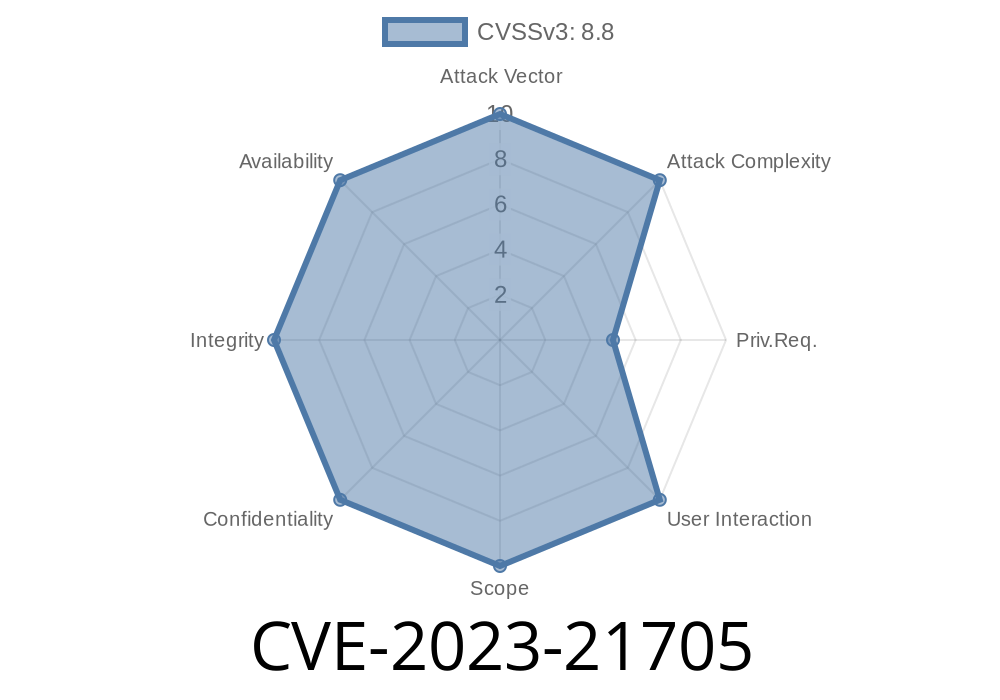CVE-2023-21705 represents a critical vulnerability in Microsoft SQL Server, one of the most widely used database platforms globally. This Remote Code Execution (RCE) vulnerability allows an unauthenticated attacker to execute arbitrary code on target systems, potentially leading to data theft, system compromise, and even complete network infiltration.
In this in-depth analysis, you'll learn about the vulnerability's impact, technical details, targets, exploit code, and mitigation techniques. You'll also find direct links to original references, ensuring that you have a thorough understanding of the vulnerability and the steps you can take to protect your systems.
The Vulnerability
Microsoft SQL Server is a relational database management system (RDBMS) used to store and retrieve data in countless applications and websites worldwide. A remote code execution vulnerability exists in the software, allowing an attacker to execute arbitrary code on vulnerable systems without authentication. This vulnerability is tracked as CVE-2023-21705 and carries a high severity rating.
Technical Details
The vulnerability exists within the SQL Server's handling of a specific stored procedure, which provides API-like functionality for the software. Due to improper validation of user-supplied input in this procedure, an attacker can inject and execute arbitrary SQL statements, leading to code execution.
Exploit Details
Here's a simplified example of the malicious SQL query an attacker may use to exploit the vulnerability:
EXEC sp_target_procedure
@input_param = 'INSERT INTO arbitrary_table (arbitrary_code)
VALUES (''EXPLOIT CODE''); EXEC arbitrary_table..arbitrary_code;';
In this example, sp_target_procedure represents the vulnerable stored procedure, while arbitrary_table and arbitrary_code signify user-controlled names for the temporary table and the code to be executed, respectively.
It's important to note that the attacker doesn't need to be authenticated to the SQL Server instance to execute this code successfully. Remote attackers can also use SQL Server injection vulnerabilities in web applications to send and execute these malicious queries.
Original References & Further Reading
For more technical information on CVE-2023-21705, including additional attack scenarios, variations, and details on how the vulnerability was discovered, please refer to the following resources:
1. CVE-2023-21705: Official CVE Description
2. Microsoft Security Bulletin: SQL Server Remote Code Execution Vulnerability
3. National Vulnerability Database: Detailed Entry on CVE-2023-21705
Mitigation Techniques
Microsoft has issued a security update for the affected SQL Server versions to patch this vulnerability. The best course of action is to apply the latest Microsoft Security Update for your SQL Server version:
- Microsoft Security Update for SQL Server 2012
- Microsoft Security Update for SQL Server 2014
- Microsoft Security Update for SQL Server 2016
- Microsoft Security Update for SQL Server 2017
- Microsoft Security Update for SQL Server 2019
Additionally, you can take further steps to harden your SQL Server deployment and reduce the risk of future vulnerabilities. These may include:
Conclusion
CVE-2023-21705 is a critical Remote Code Execution vulnerability that affects multiple versions of Microsoft SQL Server. By understanding the vulnerability, its impact, and the exploit details, you can take proactive measures to protect your systems. Applying the latest security updates and following recommended hardening techniques will help ensure that your SQL Server deployment remains secure in the face of ever-evolving cyber threats.
Timeline
Published on: 02/14/2023 20:15:00 UTC
Last modified on: 02/23/2023 15:56:00 UTC
